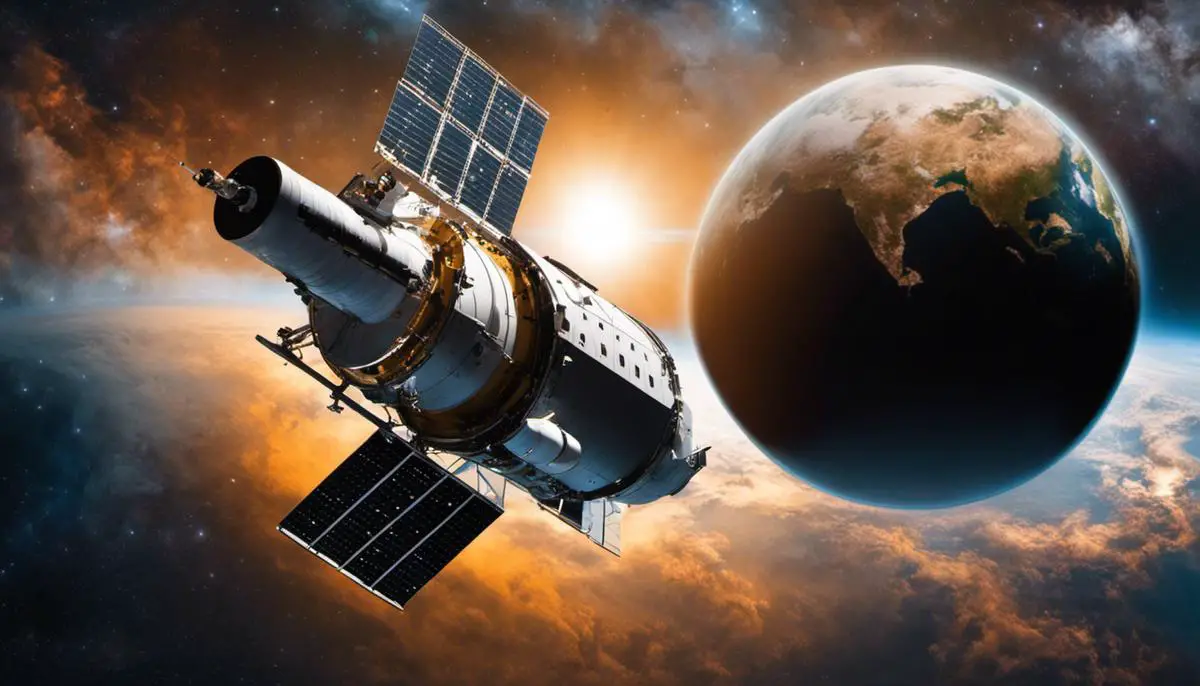For over three decades, the Hubble Space Telescope has held our collective gaze, endlessly fascinating us with unprecedented views of the cosmos. From its conception, through its technically challenging beginnings, to the monumental scientific discoveries it delivered, and onward to its enduring legacy and future promise, Hubble’s journey epitomizes the remarkable human endeavor of pushing our boundaries of knowledge and technology. The telescope, named after the pioneering astronomer Edwin Hubble, was launched in April 1990 and has since reshaped fields like cosmology, astrophysics, and planetary science. Just as Edwin Hubble catapulted our perception of the universe to staggering new heights, so has the Hubble Space Telescope, marking a monumental leap in humanity’s cosmic cognizance and curiosity.
Origin and launch of the Hubble Space Telescope
The Genesis and Launch of the Hubble Space Telescope: A Pioneering Venture into Cosmic Discovery
Regarded as one of the most transformative tools of scientific investigation, the Hubble Space Telescope (HST) stands as a testimony to humanity’s quest to unravel cosmic mysteries through advanced technology. The inception, engineering, and eventual deployment of the HST trace an intriguing tale of rigorous scientific research, innovative design, recurrent determination, and a steadfast commitment to discover the hitherto unknown expanses of the universe.
The notion of a space-based observatory was first proposed in the early 20th century by renowned astrophysicist Lyman Spitzer Jr. His seminal 1946 paper, “Astronomical Advantages of an Extra-Terrestrial Observatory,” outlined the crucial advantages such a telescope would have over ground-based ones, namely the avoidance of atmospheric turbulence and observational limitations. Spitzer’s visionary concept, however, wouldn’t receive serious attention until several decades later, predominantly due to the technological limitations of the era.
The Space Race between the United States and the Soviet Union, and the consequent advancements in aerospace technology in the mid-20th century, lent momentum to the HST’s development. The National Aeronautics and Space Administration’s (NASA) foundational steps towards the ‘Large Space Telescope’ became more pronounced in the 1970s when it formed an alliance with the European Space Agency (ESA). Following numerous cost analysis and design reviews, the collaboration led to the significant reduction of the HST’s initial mirror diameter – from 3m to 2.4m – in a bid to achieve cost-effectiveness and enhanced feasibility of deployment.
With proposals approved and funding procured, the production formally commenced in 1977. One of the most critical features of the Hubble Space Telescope is its high-precision primary mirror. Despite an unfortunate flaw that was identified post-launch, the mirror’s construction and polishing over the 1970s and early ’80s reflects nothing short of an engineering marvel.
The HST endured hundreds of hours of rigorous testing to ensure its ability to operate in extreme conditions vanquishing the impact of launch and space environment. The proposed launch in 1983, however, met with a series of deferrals due to functional and budgetary constraints. Adding to this delay was the tragic space shuttle Challenger disaster in 1986, which resulted in a postponement of all shuttle launches, impacting the Hubble’s launch schedule directly.
Finally, on April 24, 1990, the Hubble Space Telescope took flight aboard the Space Shuttle Discovery (STS-31). Despite a challenging genesis, the eventual entry of HST into orbit marked a new era in astronomy and cosmic research, providing unparalleled observations of the universe. It opened the celestial vista to inquisitive minds fostering an unparalleled confluence of curiosity and knowledge.
The conception and launch of the Hubble Space Telescope underlines the indelible perseverance of scientific minds, showcasing their relentless pursuit to decode the enigmatic universe. Soaring more than 300 miles above Earth, the Hubble continues to be a beacon illuminating the wilderness of celestial wonders, heralding new vistas of cosmic discovery.
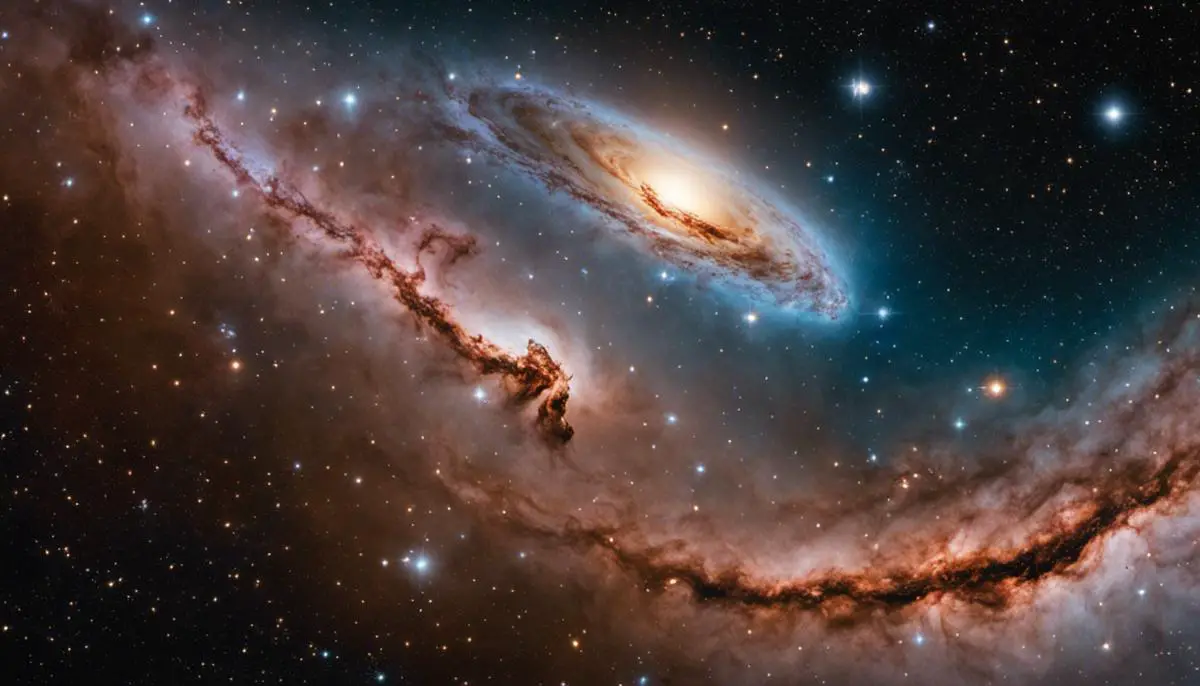
Technical challenges and servicing missions of Hubble
Without a doubt, the initiation of the Hubble Space Telescope (HST) into the orbit was a historical moment that promisingly held the potential to decipher enigmatic cosmic mysteries. However, the celebratory moment was short-lived when the first images relayed by Hubble turned out to be of significantly lesser clarity than anticipated, sourcing back to issues with one of the most crucial components – the primary mirror. The presence of spherical aberration, a premature refractive error, was identified as the bane. It was subsequently unveiled that a miscalibration of the null corrector, the primary manufacturing tool, during the mirror’s construction resulted in such conditions.
One of the momentous challenges was the repair of this astronomical flaw, an operation that proved to be as complex as the conception and construction of Hubble itself. The field called for research, equally driven by dedication and innovation, leading to the birth of the Corrective Optics Space Telescope Axial Replacement (COSTAR). Launched aboard the STS-61 shuttle mission in 1993, COSTAR was engineered to correct the aberration, essentially functioning as a set of ‘glasses’ for Hubble.
Interestingly, COSTAR wasn’t the unified solution for all the scientific instruments onboard. The Fine Guidance Sensors (FGS), crucial for pointing accuracy, were left unaffected by COSTAR, prompting the design of replacement instruments, like the Wide Field Camera 3, equipped with internal corrective optics. The advent of these and other technical upgrades were made possible through a series of meticulously planned servicing missions, which addressed not just corrective requirements but also enhancements in the realm of technology and devices onboard the HST.
Hubble faced another critical technical challenge in the form of instrument degradation over time, due to cosmic ray damage, and the hostile conditions in space. To skirmish this challenge, the technologically advanced instruments like the Advanced Camera for Surveys (ACS) and the Cosmic Origins Spectrograph were introduced in subsequent servicing missions. These new additions were not only more resistant to the environmental instabilities but also excelled in efficiency and capability.
Another area of focus was the preservation of power supply of HST. With the relentless degradation of solar panels due to extreme radiation and thermal cycling, their performance had started waning, precipitating the need for replacements. The second and third servicing missions conscientiously attended to this requirement, ensuring the availability of uninterrupted power to Hubble.
The success of servicing missions and the longevity of the Hubble Space Telescope are a testament to scientific aspiration, meticulous planning, and the evolution of technology. The accomplishment in overcoming these technical obstructions validates the reassurance in the human potential that demands not to wane in the face of challenges. The tale of Hubble apprehends the quintessence of human perseverance, thus inspiring generations of explorers harking back to the stars.
Thus, the glory of Hubble is not just about being a marvel of astronomical observation, but about being a monument to a saga of human ingenuity, resolution, and the incessant pursuit of exploring the unexplored.
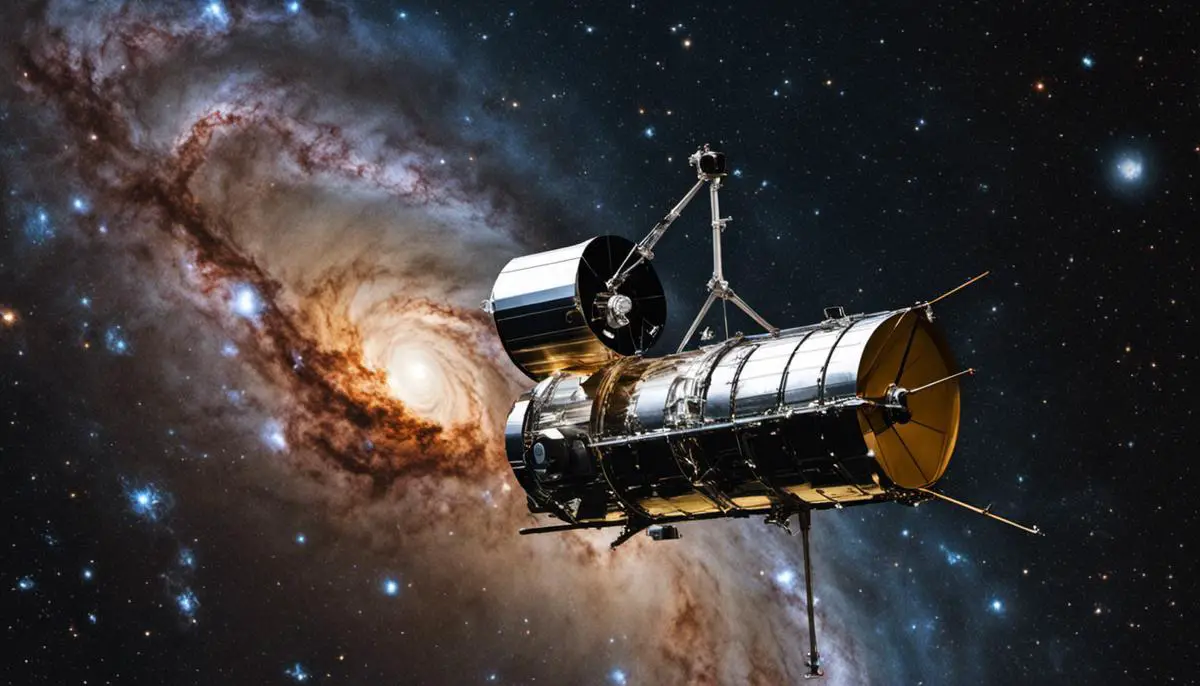
Scientific findings and contributions of Hubble
As we continue the journey through Hubble’s trajectory, it is important to underscore the invaluable scientific discoveries this instrument has enabled. From the inception of its creation, its purpose has been to explore, observe, and apprehend the mysteries of the universe. However, its actual contributions surpass even the most aspirational expectations.
One ground-breaking revelation was the accurate determination of the age of the universe. Preceding the Hubble’s existence, estimates of the universe’s age varied drastically from 10 billion to 20 billion years old. Thanks to Hubble’s high-precision measurements of Cepheid variable stars, scientists significantly narrowed down this range. Currently, the universe’s age stands at approximately 13.8 billion years.
Hubble also lent a helping hand in verifying the existence of black holes, a proposition once only permitted within the realm of theoretical physics. By capturing high-resolution images and patterns of rapid stellar motion at the cores of galaxies, like M87, scientists could infer the presence of these massive, destructive entities. Thus, galactic comprehension broadened thanks to the capabilities of the Hubble.
In an incredible reel of cosmic revelations, the Hubble Space Telescope also identified proto-planetary disks, known as “proplyds.” The Hubble was able to capture these formations of dust and gas around young stars, providing invaluable insights into the early stages of planetary system formation.
Perhaps an even more jaw-dropping discovery came about when Hubble challenged the previously-held scientific belief of a slow-going expansion of the universe. Through careful observation of supernova explosions, Hubble revealed that the universe’s expansion appears to be accelerating due to a mysterious entity, later coined as dark energy. This paradigm-altering information infused a reshuffling of our understanding of the cosmos, and remains an active area of inquiry.
The sheer existence of exoplanets, planets that orbit a star outside the solar system, was also proven thanks to the Hubble. Moreover, the telescope uncovered the atmospheric composition of these exoplanets. The detection of chemicals such as sodium, methane, and even water vapor, has provided scientists with a wealth of data invaluable in the search for extraterrestrial life.
Furthermore, Hubble’s accurate measurements of cosmic distance provided evidence supporting the Big Bang Theory. By monitoring the redshift in distant galaxies, Hubble was able to confirm that the universe is indeed expanding. This reaffirmed the notion that the universe originated from a singularity, thus reinforcing the Big Bang Theory.
Without doubt, the Hubble Space Telescope has transformed our understanding of the universe. Each discovery it helps initiate peels away another layer of the cosmic onion. With renewed servicing missions currently under discussion, it is hoped that the Hubble’s research will continue, contributing to the ocean of knowledge whenever possible. It remains the embodiment of scientific pursuit, reminding us of the vastness and wonder of the cosmos yet to be known. The journey has been thrilling, the findings revolutionary, and the future looks brighter because of Hubble’s relentless service in shedding light on the complexities of our universe.
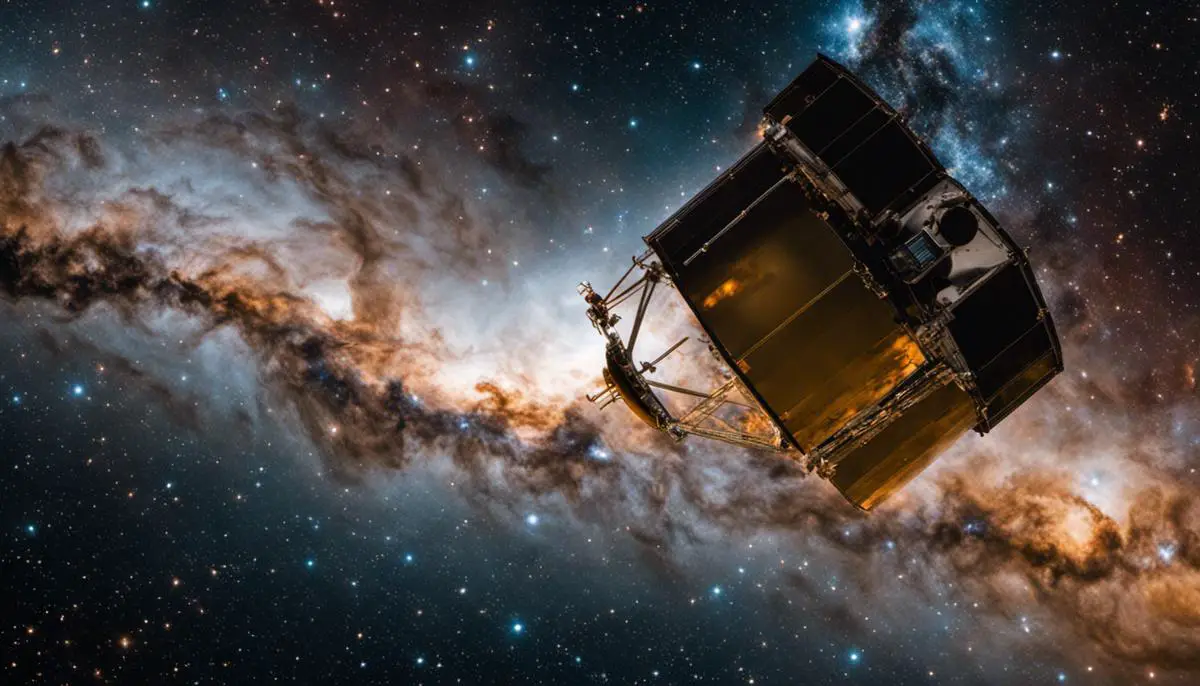
Future of space-based astronomy and Hubble’s place
Undoubtedly, the Hubble Space Telescope continues to change our perception of the cosmic panorama, underpinning numerous groundbreaking discoveries and fostering a profound understanding of the universe. However, its long and illustrious reign, like all cosmic entities, must eventually encounter a new dawn. The telescope’s inevitable aging process, and the waning possibility of future servicing missions, prompt us to envision its successor – the James Webb Space Telescope (JWST).
Born out of the triumphs and tribulations of the Hubble into reality, the JWST is indeed the product of lessons learned and seemingly insurmountable challenges overcome. Termed the ‘new frontier of astronomy,’ JWST aspires to deepen our understanding of the universe by viewing the cosmos through an unprecedented spectral window.
Hubble’s successes undeniably pave the path for JWST, setting a high bar for observational excellence. It is designed with a primary mirror nearly three times larger than Hubble’s, enabling the capture of more light, thus providing an opportunity to gaze deeper into space and further back into time. This enhancement in sensitivity is set to unveil the hidden mysteries of the universe, including never-before-seen stages of star and galaxy formation.
Taking a leap from Hubble’s dominant focus on visible and ultraviolet light, JWST stands at the helm of the new era of infrared astronomy. This emphasis on infrared capability is instrumental in studying celestial bodies shrouded in dust clouds – objects that were previously indiscernible by their older counterpart, the Hubble.
JWST’s enhanced technology is specifically conceived to address some of the most fundamental scientific questions that remain unanswered by Hubble’s observations – the formation of the first galaxies, the characteristics of exoplanets, the nature of dark energy, among others. Furthermore, with its advanced instrumentation, JWST is set to broaden the horizon of astronomical discovery, ensuring tremendous scientific potential and enriching our celestial comprehension.
While Hubble and JWST are fundamentally different in design and objectives, they share a common legacy – a relentless quest for knowledge. As JWST prepares to take up the mantle, it does not symbolize an end to Hubble’s era but rather a continuation of a journey that started more than three decades ago. It is simply the next chapter in our endless pursuit of the cosmos.
Ultimately, the Hubble Space Telescope’s contribution to space-based astronomy transcends its remarkable array of discoveries. Its greatest legacy, perhaps, is the path it has paved for future exploration, embodied by the James Webb Space Telescope. As we stand on Hubble’s shoulders, looking deeper into the universe with JWST, it is evident that the story of space-based astronomy is far from over – it is ever-evolving, driven by an insatiable human curiosity to comprehend our place in the cosmos.
It is through this lens of ceaseless exploration that the Hubble Space Telescope indeed factors into the future of space-based astronomy – as a respiring testament to human ingenuity, fueling the engines of discovery for generations to come.
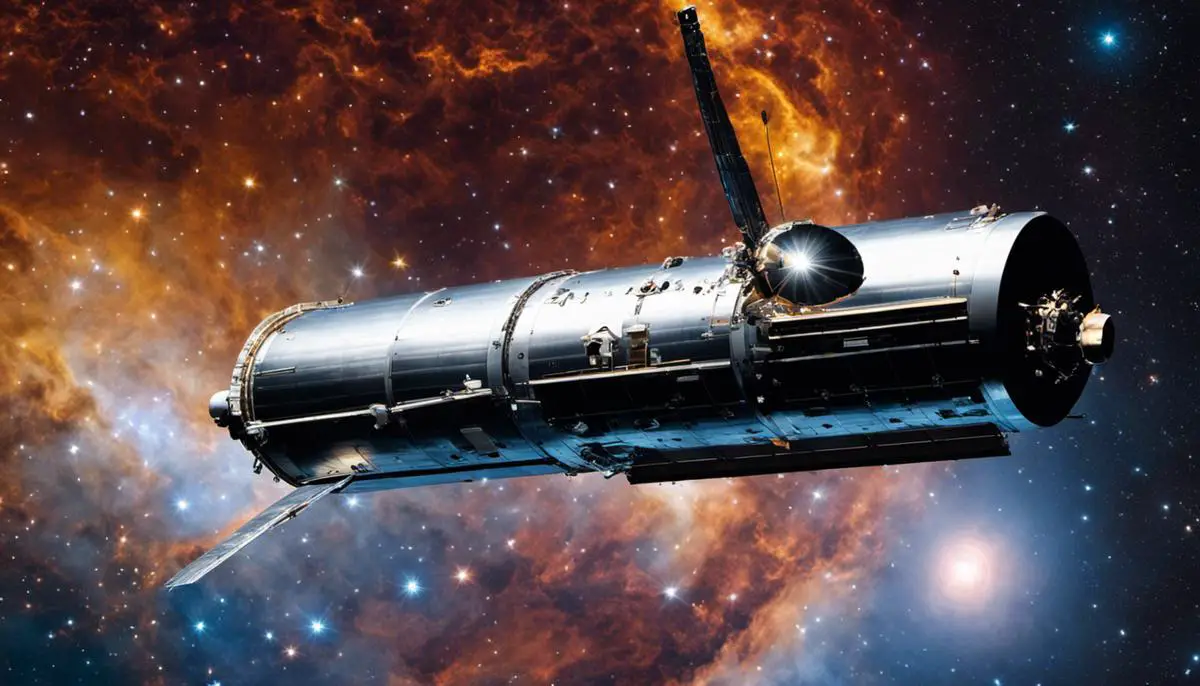
As the cosmos continues to unravel its mysteries, we can be sure that the indelible legacy of the Hubble Space Telescope will endure. It’s a testament to the skill, ingenuity, and vision of those who dreamed of a future where humans could explore the universe in more profound ways. Hubble’s journey, and its pioneering role in space-based astronomy, has set a high benchmark for upcoming missions like the James Webb Space Telescope. Its scientific contributions, including verification of accelerating universe and clarifying cosmic phenomena, have fundamentally transformed our understanding of our place in the universe. The extraordinary blend of human achievement, technical advancement, and versatile scientific exploration that the Hubble telescope signifies will continue to light the way to future breakthroughs, forever etching its name in the stars.
![]()
